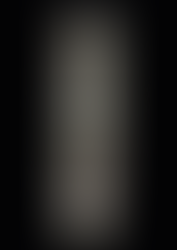One to Watch - Peerasin Hutaphaet
- osloagency

- Sep 26
- 3 min read
Where did you study and what was the course title?
I graduated from MA Material Futures at Central Saint Martins, University of the Arts London.
Name of your lecturer – course tutor?
The one who most ignited my passion for regenerative design was Professor Carole Collet. My course tutors were Maël Hénaff, Agi Haines, and Alara Sipahioglu, each shaping my journey in different ways.
How did you feel about winning the attention of the judges – what does it mean to you?
It feels like proof that colour doesn’t have to be synthetic, permanent, or destructive — it can return to nature, just as it always has.
About the project
My project, GrowInk, reimagines colour as a living process. Using fungi, I developed
bio-inks that print vibrant designs on textile, paper but instead of lingering forever as waste, these pigments also help the fabric decompose at the end of its life. It’s colour that performs double duty: beauty in the present, regeneration in the future. GROWinK challenges Prints obsession with permanence and synthetic vibrancy, showing that colour can be temporary, cyclical, and ecologically active.
How important is colour in your work and why?
For me, colour is never static. It breathes, fades, transforms. it carries both creation and destruction. Instead of endlessly chasing Pantone’s catalogues, I look to the CMYK system as a technological framework and rebuild it with fungal pigments. My colours don’t just decorate; they return to the soil, closing the loop between human design and ecological cycles.
What is your main source of inspiration?
I live in the collisions. where biology meets technology, where design touches science, where art overlaps with engineering. Those intersections excite me. But my deepest inspiration will always be nature: the ultimate collaborator, teacher, and critic. It shows me that nothing exists in isolation, and every act of creation should also prepare for decomposition.
What makes you happiest/most fulfilled in your creative process?
The moment when someone realises that colour doesn’t have to last forever that impermanence can be beautiful. Our culture craves permanent pigments, but I find joy in the opposite: colours that shift, fade, and transform. Each change is like a breath of renewal, reminding us that regeneration is more powerful than permanence.
Creative high point?
When I realised fungi-based pigments could be more than just “natural dyes.” They could become a printing technology precise, vivid, and regenerative. That moment transformed my work: from crafting sustainable alternatives to designing a system where colour itself becomes an ecological agent.
Creative low point?
Battling the technical barriers of printing with fungi. Sublimation and inkjet systems demand precision, while fungal pigments are unpredictable, alive, and stubborn. It’s like convincing a forest to behave like a machine. But those struggles are where innovation hides.
Where do you want to be in 3 years’ time?
I want to stand as a Visual Ecologist studio designing colour systems that do more than communicate. I want my visuals to act: to regenerate soil, nurture biodiversity, and rewrite our relationship with the natural palette. In three years, I hope to see colour not only in galleries or runways, but in ecosystems healing themselves.
What is your favourite colour?
My favourite colour is grey. Grey is the mediator, the space between extremes. It adapts, blends, camouflages, and makes room for every other shade to shine. To me, grey is resilience a quiet balance that holds the spectrum together.
Instagram: https://www.instagram.com/punxh.13




















